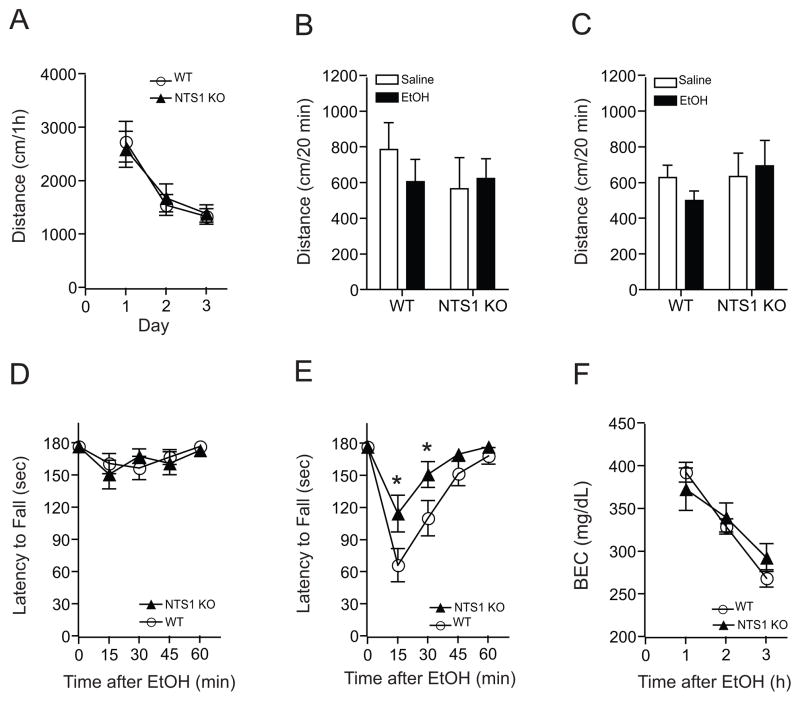Figure 1.
Effect of ethanol-induced locomotor activity and ataxia in NTS1 null mice. (A) Basal locomotor activity was similar between genotypes (n = 22 for wild-type and n = 16 for NTS1 null mice). (B) 1.0 g/kg (i.p.) ethanol (n = 11 for wild-type and n = 7 for NTS1 null mice) and (C) 1.5 g/kg (i.p.) ethanol did not induce any changes in initial locomotor activation (n = 11 for wild-type and n = 9 for NTS1 null mice). In the rotarod test, (D) 1.0 g/kg ethanol had no effect (n = 19 for wild-type and n = 15 for NTS1 null mice), but (E) at a 1.5 g/kg ethanol dose, NTS1 null mice (n = 18) showed a significant reduction in ethanol-induced ataxia in a rotarod test compared to their wild-type littermates (n = 21). *p < 0.05 compared to the wild-type littermates at same time after ethanol injection (Tukey test). (F) Blood ethanol clearances after acute administration of 3.6 g/kg ethanol were similar between genotypes (n = 11 for wild-type and n = 9 for NTS1 null mice). p > 0.05 by Tukey test. All data are expressed as mean ± s.e.m.

